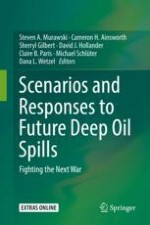2020 | OriginalPaper | Buchkapitel
13. The Utility of Stable and Radioisotopes in Fish Tissues as Biogeochemical Tracers of Marine Oil Spill Food Web Effects
verfasst von : William F. Patterson III, Jeffery P. Chanton, David J. Hollander, Ethan A. Goddard, Beverly K. Barnett, Joseph H. Tarnecki
Erschienen in: Scenarios and Responses to Future Deep Oil Spills
Aktivieren Sie unsere intelligente Suche, um passende Fachinhalte oder Patente zu finden.
Wählen Sie Textabschnitte aus um mit Künstlicher Intelligenz passenden Patente zu finden. powered by
Markieren Sie Textabschnitte, um KI-gestützt weitere passende Inhalte zu finden. powered by
